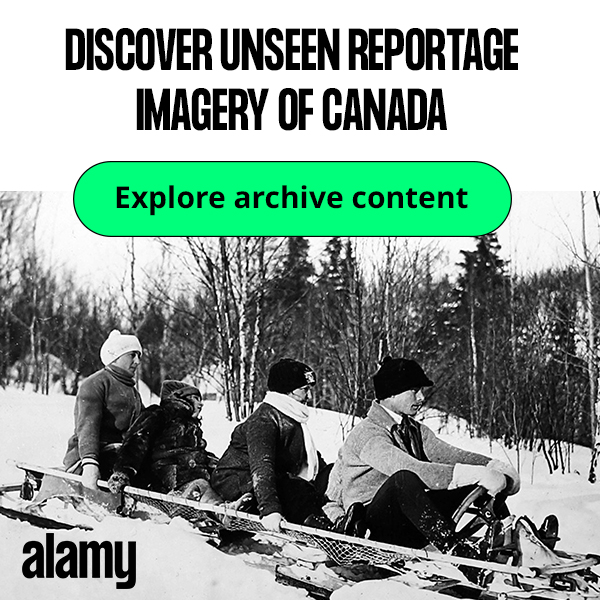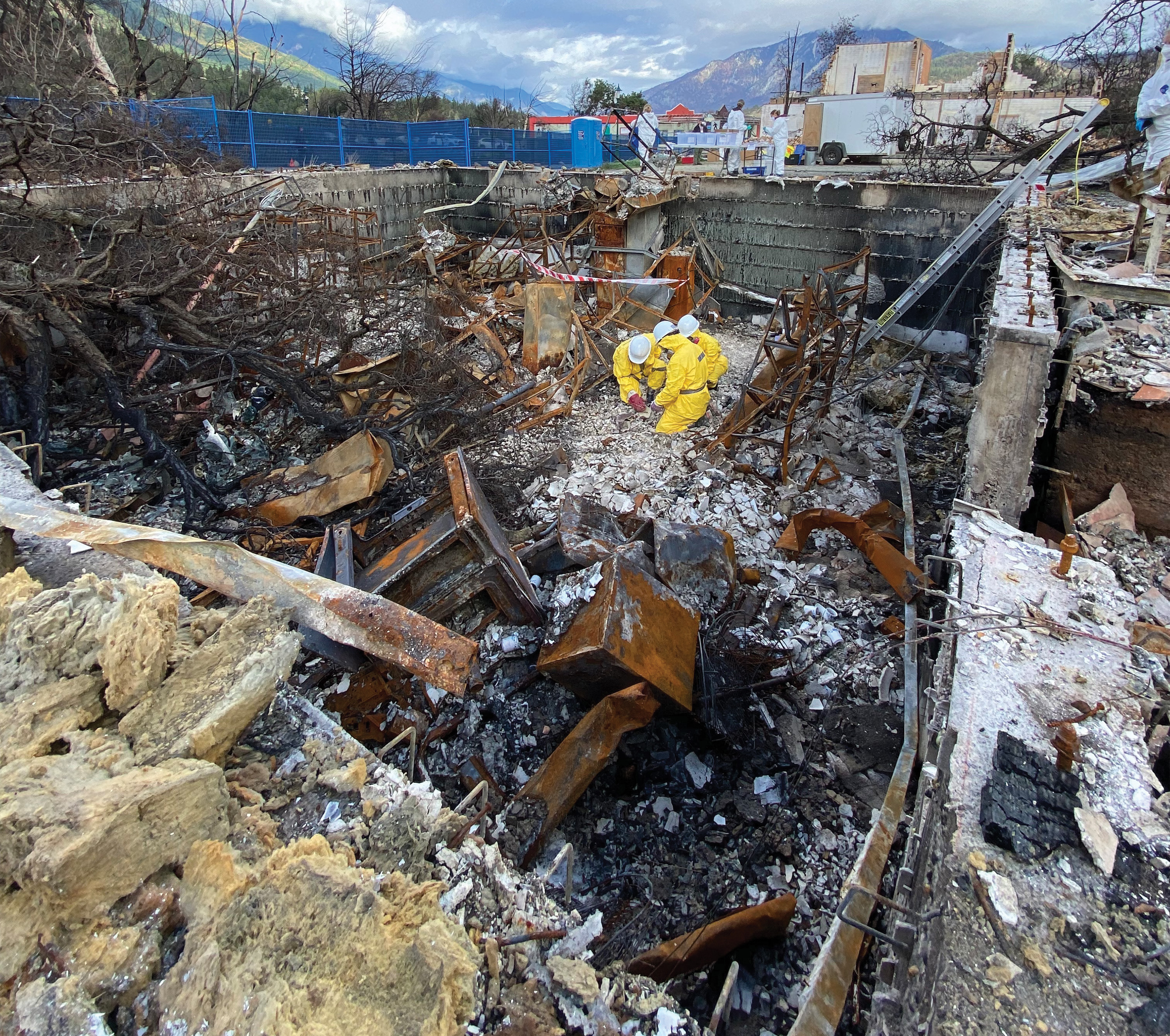
Volunteers organized by BC HERN and the BCMA came from museums across the province to help after wildfires razed two museums in Lytton, B.C. in 2021. Photo — BC HERN
Weathering the Storms
Peter Simpson
If every dark, dangerous, climate-change induced cloud has a silver lining, it’s this: stark demonstrations of the growing threat have prompted changes in how museums are preparing for the worst.
Floods in 2013 and fires in 2016 led the Alberta Museums Association (AMA) to expand what is perhaps Canada’s leading provincial disaster support program for museums, in both being prepared for the worst and cleaning up the mess.
“We looked at how museums could be better prepared for these kinds of disasters, based on all of these things that were happening, because we were seeing that the kind of disasters that were happening every 100 or 50 years were happening more and more frequently,” says Jennifer Forsyth, executive director and CEO of the AMA. “We recognized that museums needed to be better prepared. Now, one of the things we ask our recognized institutions to do is to prepare an emergency plan.”
In Alberta, perhaps no institution has had more recent brushes with disaster than the Fort McMurray Heritage Society — which has endured both flood and fire. Recovery work at the Heritage Village has been intense — buildings raised onto stronger foundations, a berm built to keep back floodwaters and a storm pond created to redirect destructive water.
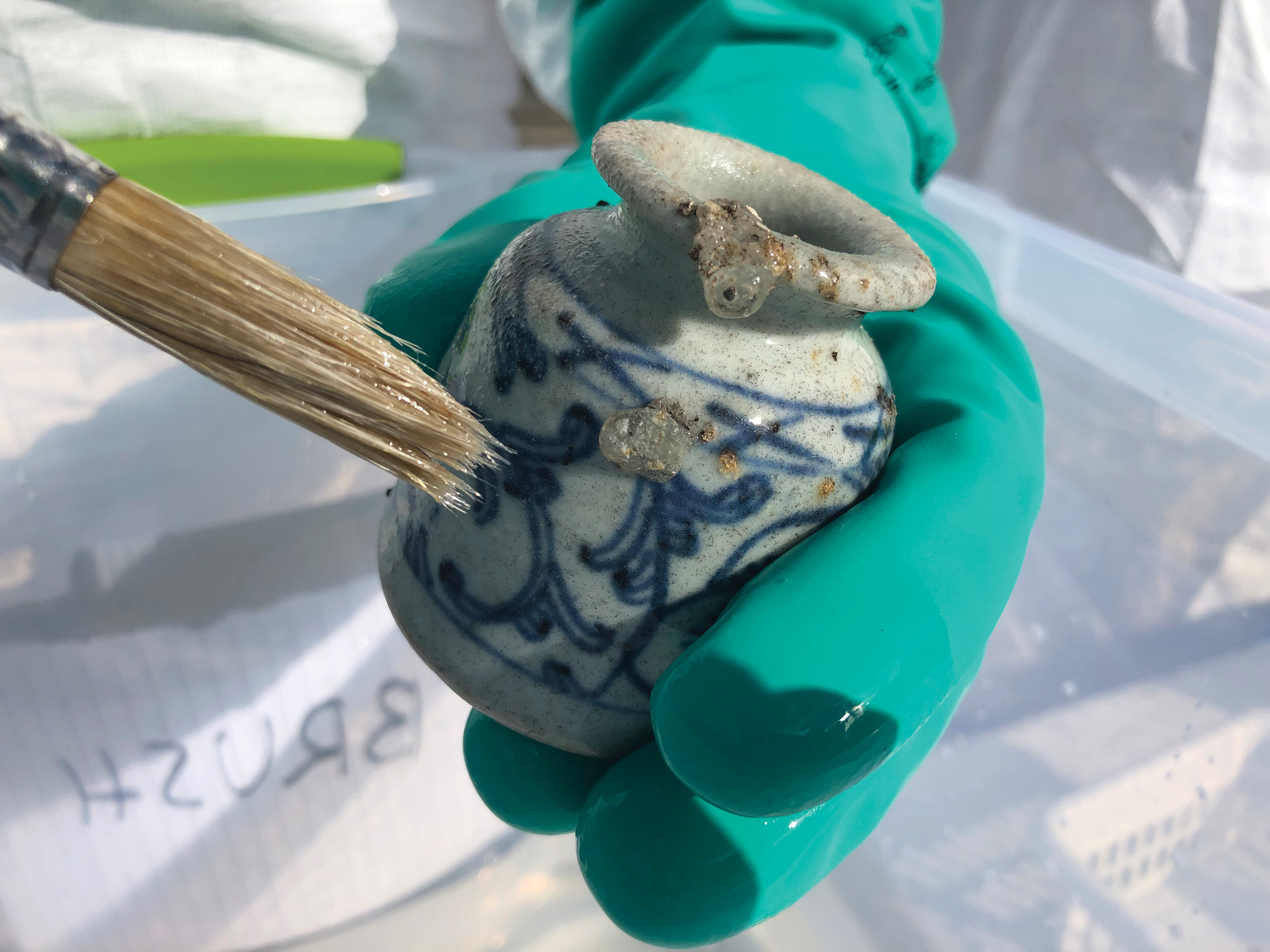
There was massive damage to collections at museums in Lytton, B.C. after wildfires in 2021. Photo — BC HERN
“The Hangingstone River flood of June 2013 devastated Heritage Village, and we wondered how we would ever function as a museum again. The damage to our buildings, infrastructure, collections and archives was beyond our comprehension,” wrote Heritage Society executive director Roseann Davidson on an AMA blog in 2020.
Thirteen structures at the Heritage Village sustained “significant damage” in the floods, Davidson says in a video that can be watched on the AMA’s website. The village and adjacent heritage shipyard were set to reopen in 2016 when the wildfire “shattered our dreams of opening the museums to the public.” While the fires caused minimal direct damage to the society’s structures, there was much soot damage to collections and “the devastation of this natural disaster ... greatly affected our museum facilities, contractors and staff.”
The AMA — which like other organizations often works with the Canadian Conservation Institute — has voluminous online resources to help museums prepare and recover. It also publishes a 330-page “Emergency Preparedness Manual for Museums” that includes sections on planning, preparedness, response and recovery. In Fort McMurray, for example, “We had looked not only at funding institutions to recover but at ways we could help them prevent disasters in the future,” Forsyth says.
Meanwhile in neighbouring British Columbia, when wildfires tore through Lytton last spring, both the Lytton Museum and Archives and the Lytton Chinese History Museum literally were burned to the ground, and the losses to heritage and history were immense.
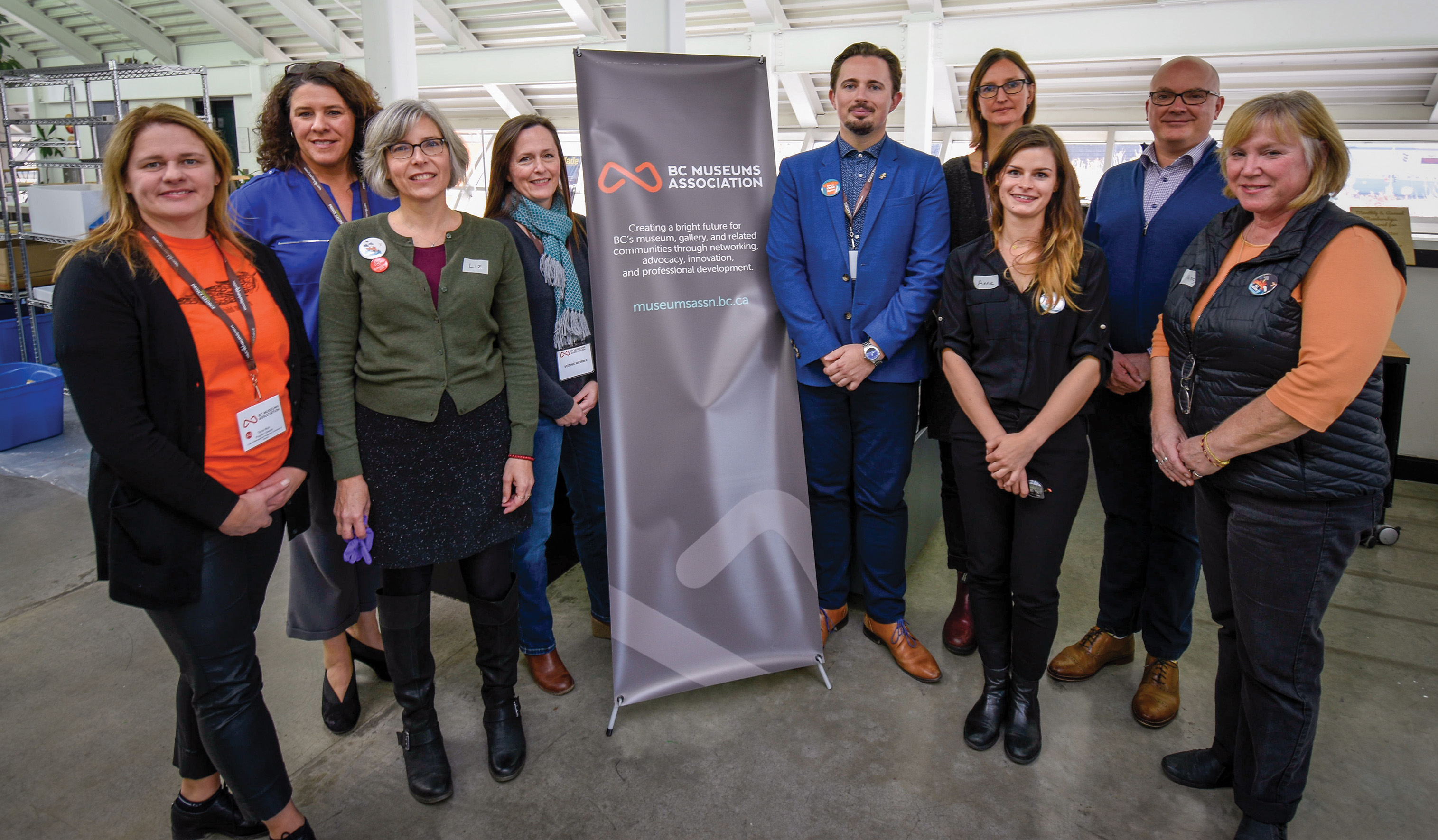
The signing of a MOU between the B.C. Museums Association and B.C. HERN in 2019, with BCMA executive director Ryan Hunt (at right of banner) and (next to Hunt in background), Heidi Swierenga, a member of the HERN steering committee and senior conservator and head of collections care and access at the Museum of Anthropology at UBC. Photo — BCMA
The 2021 fires and floods in B.C. “really helped us to understand where the focus needs to be, because everybody now really sees that these things can become yearly events,” says Heidi Swierenga, a senior conservator and head of collections care and access at the Museum of Anthropology at the University of British Columbia. “It’s hard to wrap your head around that, because usually once every hundred years you’re going to get that flood and now it’s much more often.
“That seems to be what’s driving a lot of momentum right now for institutions,” says Swierenga, who is on the steering committee of the fledgling and volunteer-driven organization BC HERN, or British Columbia Heritage Emergency Response Network.
“We started because the province didn’t have an organized response for heritage when it came to localized emergencies or larger disasters. But right now ... people are taking more notice. Because we’re seeing whole towns taken down, it seems more real, and people are using that as an impetus to make an argument to boards and administrators that disaster and emergency planning is important for institutions.”
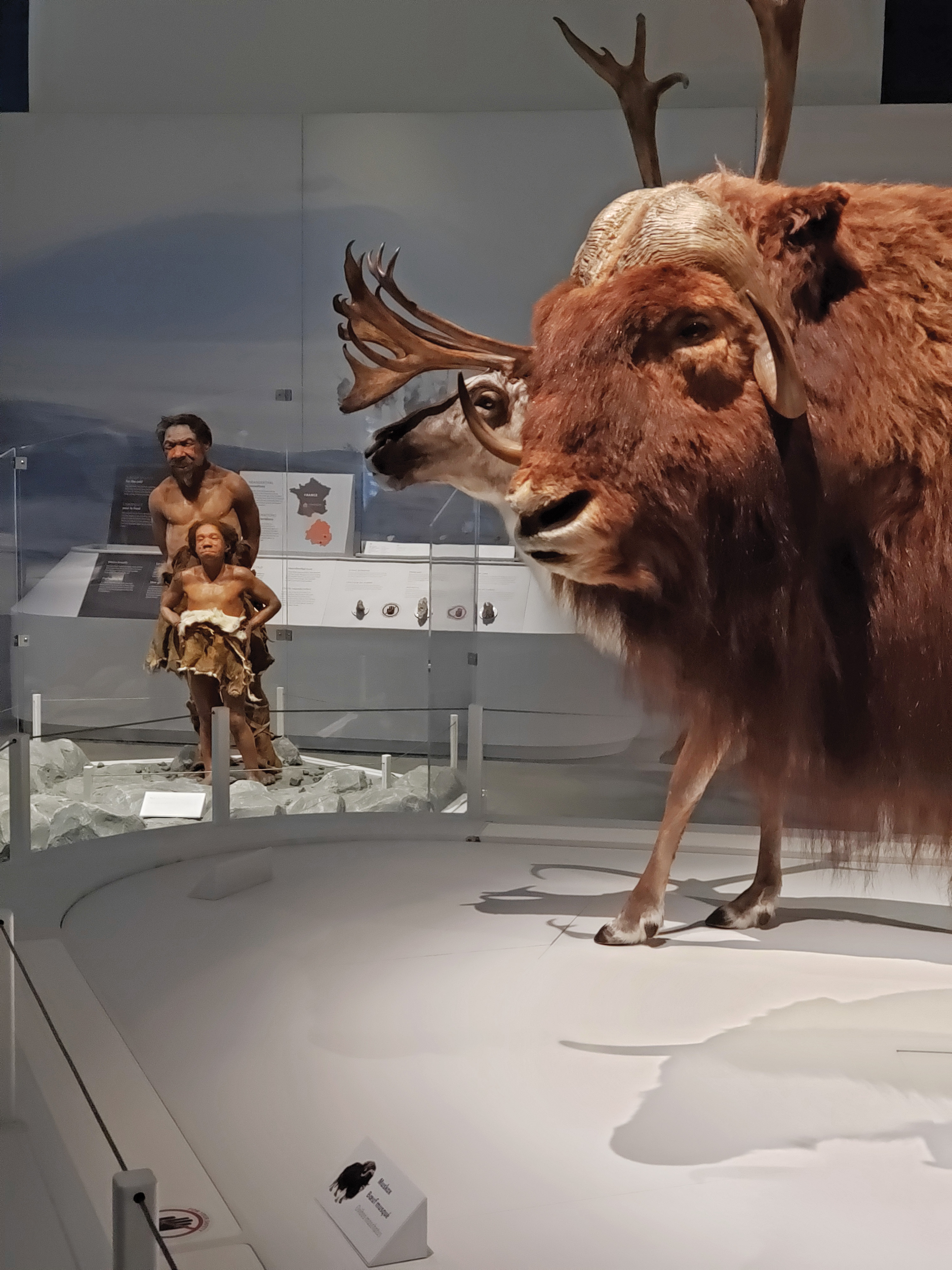
Some artefacts and specimens in Planet Ice: Mysteries of the Ice Ages, launched by the Canadian Museum of Nature in 2020 and now touring North America, may not be included in smaller venues with insufficient or overwhelmed environmental controls. Photo — CMN
Just outside Victoria, Ryan Hunt says it’s the coldest winter in 50 years. “I am technically snowed into my house right now,” he says, on a day when the temperature dropped to –14 C, almost 20 degrees below average for the city in January.
Hunt, who is executive director of the B C Museums Association (BCMA), notes other anomalies. A tornado recently formed over Vancouver, he says, “which is basically unheard of, so I think that everyone in the sector, regardless of what kind of site they have — especially spurred by the two sites being destroyed in Lytton — is in the process of rethinking and re-imagining what it means to be prepared for emergencies.”
In the short term the BCMA is working with Heritage BC to ensure BC HERN has access to funding so it can respond quickly to emergencies, he says. In the longer term, BCMA is talking with members and government at all levels about preparedness — a need that’s especially acute during the overlapping crises of pandemic and climate change.
“Those two things are combining to really weaken the resilience of our sector,” Hunt says. “Rates of stress and burnout are through the roof. So it means that when sites get hit by something weather related that previously they could have absorbed, because they had funding or had the energy to deal with it, they no longer do.”
Alberta and B.C. are leading the way in emergency preparedness and response plans among the provinces, as they’ve unfortunately seen the worst of what a changing natural environment can do, but they aren’t the only ones affected.

Volunteers organized by BC HERN and the BCMA came from museums across the province to help after wildfires razed two museums in Lytton, B.C. in 2021. Photo — BC HERN
These lessons of loss are being seen clear across Canada.
“Given the number of fires that are occurring across Canada and in the United States, that’s something we’ve talked about, just from the perspective that it’s a very large historic site and it can get very dry in the summer,” says Mary Baruth, CEO of Kings Landing, the living historical village on the Saint John River southwest of Fredericton, New Brunswick.
The village has dozens of heritage buildings built as long ago as 1795, and all but one are built of wood. The institution recently went through a capital assessment and building renewal plan, “so we know exactly where our weaknesses are and what we need to do to secure the buildings and the artifacts that are contained therein.” An emergency plan will be upgraded in 2022 “to include any sort of natural disasters that may be caused by climate change.”
Even renovations or construction of new buildings are being guided by environmental concerns. The Marine Museum of the Great Lakes at Kingston, Ontario, has largely escaped climate-change damage to date, though a roof blew off one outbuilding last year and eight feet of shoreline were lost due to flooding. Manager Doug Cowie says pending renovations will be guided in part to “help the global warming effort.”
“Whatever renovations or reconstruction and so forth we do, we do the greenest solution possible,” Cowie says. “Everybody’s trying to do that now in everything we do.”
Baruth, at Kings Landing, agrees. A current renovation is being done “as green as we possibly can,” and “anything that we do now, any sort of modern upgrades, are all done to code to account for severe weather events.”
The weather trends are also affecting travelling exhibitions and loans.

Waterscapes, an exhibition from the Museum of Nature that toured extensively in 2009. Touring exhibitions are seeing changes as extreme heat challenges the environmental controls at smaller venues. Photo — CMN
“How do we be sure that other environments can be controlled, especially when there are increases in humidity and temperature going forward?” asks Alisa Barry, vice-president of experience and engagement at the Canadian Museum of Nature in Ottawa.
There’s been at least one case where an exhibition couldn’t go to a venue because “they didn’t have the humidity controls, and that was exacerbated by unusual climatic conditions,” Barry says. “Museums used to just by default travel most of their specimens, but the whole thinking about that and the risk is definitely being thought through.”
In addition to the physical damage caused by climate change, there’s also psychological damage. Forsyth says the AMA partners with Alberta Health Services to provide “psychological first aid” to museum staff in disaster zones.
“That was really helpful from the perspective of someone who was on the phone and you have to talk people through how it feels to go through these tragedies,” she says. “We’re in this time where we’re going through tragedies again and again, and these natural disasters just keep happening. Being prepared for the emotional surge when that happens ... we found that was something we really need internally.” M
Peter Simpson has written about arts and culture for many years from his art-filled home in downtown Ottawa.
